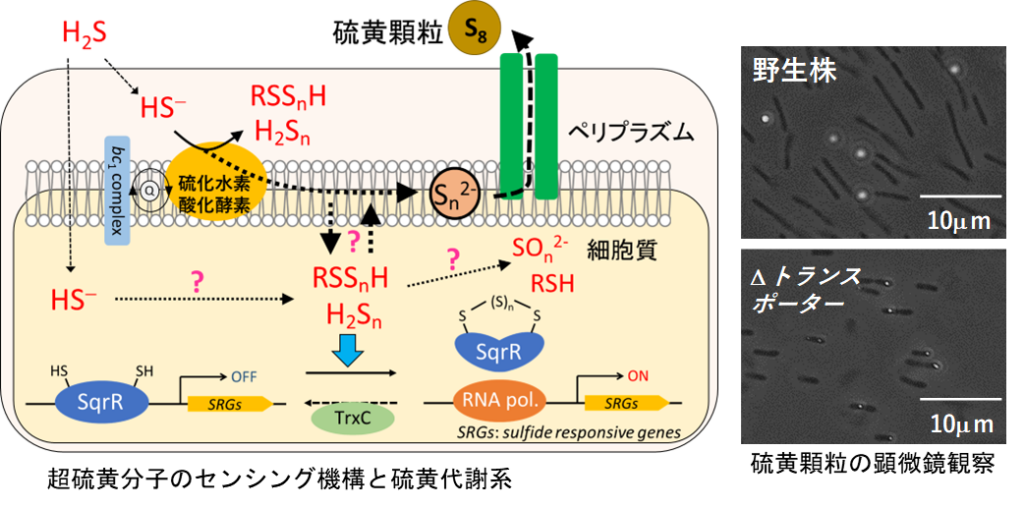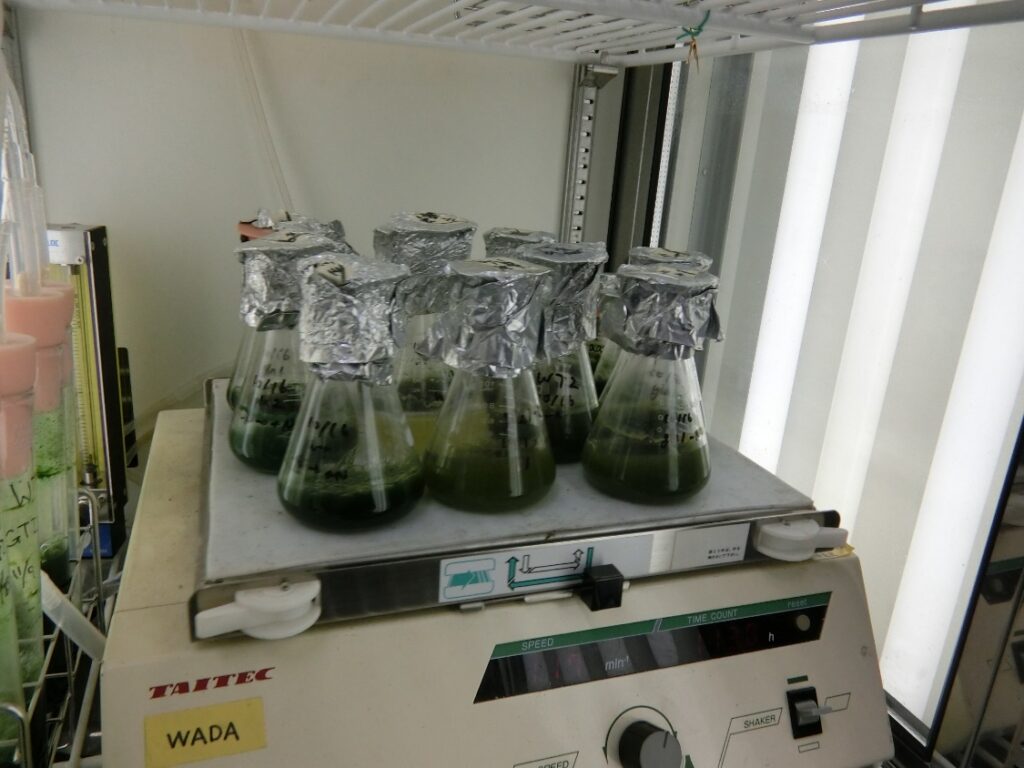Research
Sulfur metabolism and redox response in photosynthetic bacteria
Supersulfide is sulfur metabolites that contain excess sulfur atoms and exhibit strong redox activity.
Our goal is to understand biological phenomena through true redox signaling by focusing on these supersulfide.
Using reddish photosynthetic bacteria that utilize hydrogen sulfide as an electron donor in photosynthesis, we aim to elucidate the sensing mechanisms of supersulfide and the associated sulfur metabolic pathways.
This research holds the potential to establish fundamental concepts that could pave the way for novel treatments for various diseases caused by redox imbalances.

Regulation of Plant Physiological Functions by Supersulfide
Using Arabidopsis thaliana as a model plant, we are investigating the effects of supersulfide on plant physiological functions, with the aim of reconstructing plant growth and inter-organelle signaling based on the regulatory mechanisms of supersulfide signaling.
In particular, we focus on the relationship between the formation of chloroplasts—which are responsible for photosynthetic functions—and supersulfide.
We are also conducting research with the goal of developing innovative applications of supersulfide to enhance the productivity of agricultural crops.

Heavy metal removal and oil production by algae
Nannochloropsis, a type of microalgae, has the ability to adsorb heavy metals and accumulate lipids within its cells.
Leveraging this property, we aim to develop a system that simultaneously produces oil and removes heavy metals from mining and industrial wastewater.





